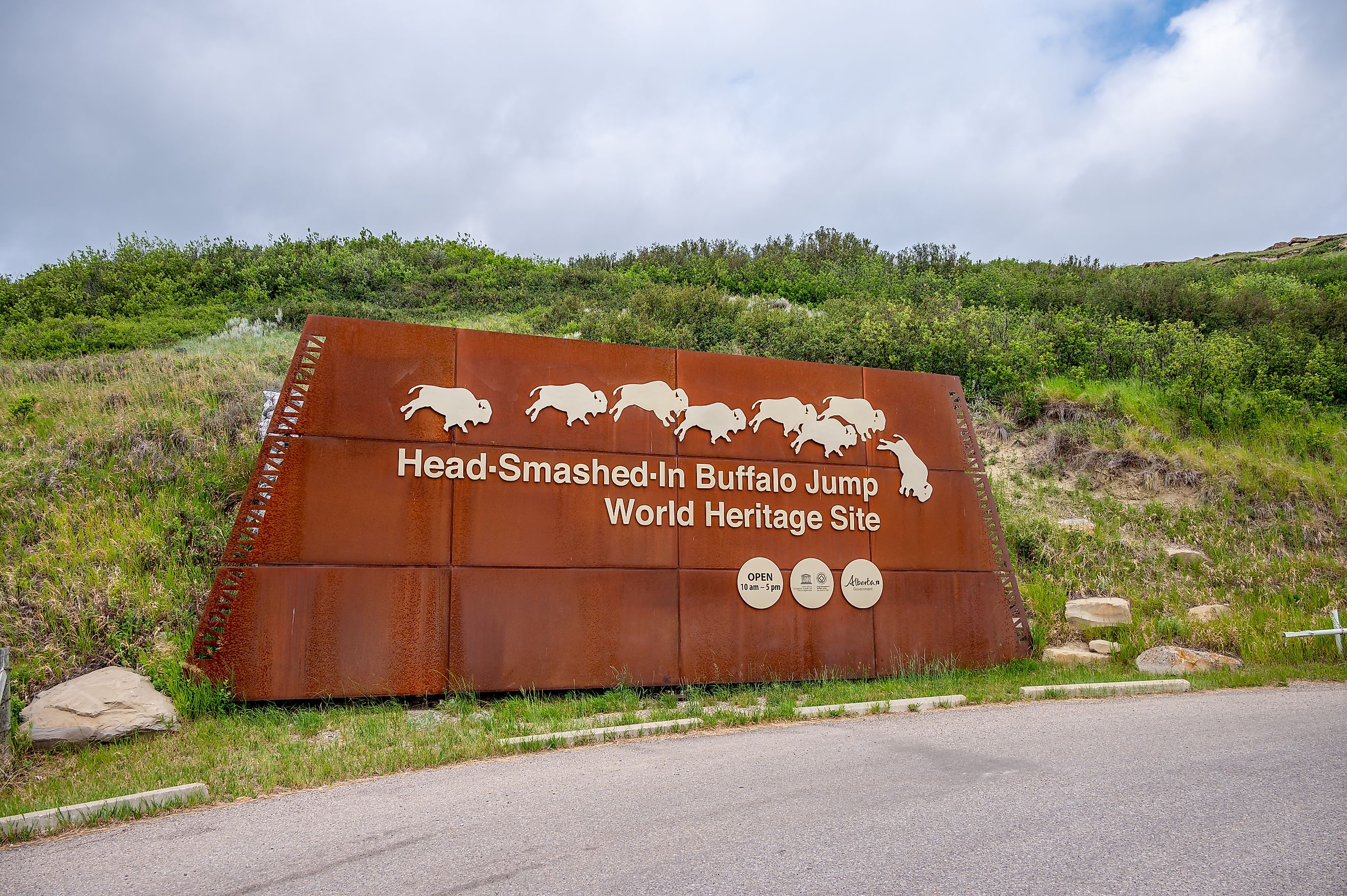
Head-Smashed-in Buffalo Jump UNESCO World Heritage Site
A UNESCO World Heritage Site is a landmark or area recognized by the United Nations Educational, Scientific, and Cultural Organization for its cultural, historical, or environmental significance. These sites are considered to be of outstanding value to humanity, and their preservation is crucial for future generations.
With this info in mind, the residents of Alberta may be pleasantly surprised to know that their province contains several of these important landmarks, including Head-Smashed-In Buffalo Jump just south of Calgary. Let's better explore this peculiarly named UNESCO site and uncover its history, along with its continuing relevance in Canada and the rest of the world.
What is a Buffalo Jump?
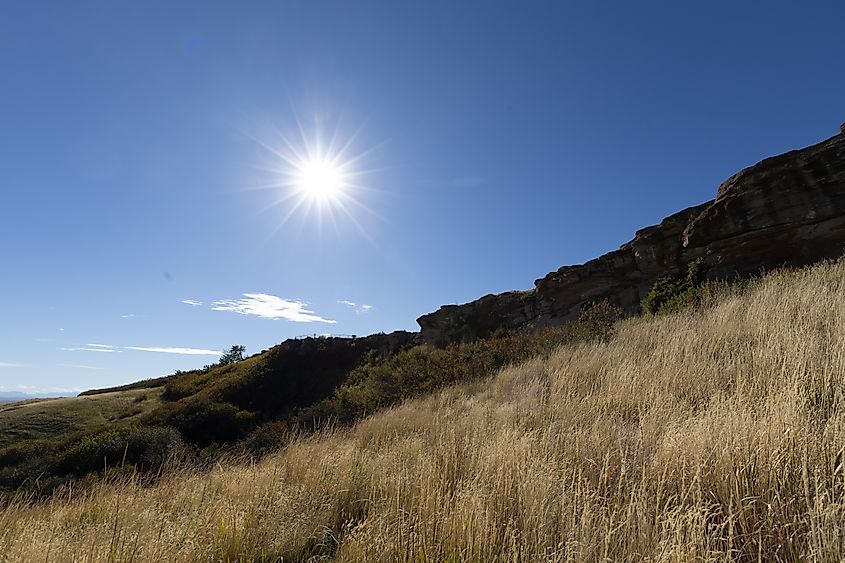
Most of you are probably wondering what a "buffalo jump" even is: A buffalo jump is a cliff formation historically used by Indigenous peoples in North America to hunt bison, a vital food source for many. For thousands of years, plains tribes employed this technique to efficiently harvest large numbers of bison. By strategically herding the animals toward the cliff’s edge, hunters would create a stampede, driving the bison over the precipice to their deaths or incapacitation below. The animals were then processed for meat, hides, bones, and other essential materials used for clothing, shelter, and tools.
Buffalo jumps were carefully selected for their terrain and proximity to settlement areas. These sites often featured drive lanes—stone cairns or other markers—to funnel the animals toward the cliff. The technique was used before horses (which would later allow riders to shoot buffalo while swiftly on the move) became common in North America and exemplifies the sophisticated hunting strategies of early Indigenous cultures. One of the most prominent examples is none other than Head-Smashed-In Buffalo Jump in southern Alberta.
Who Exactly Used the Head-Smashed-In Buffalo Jump?
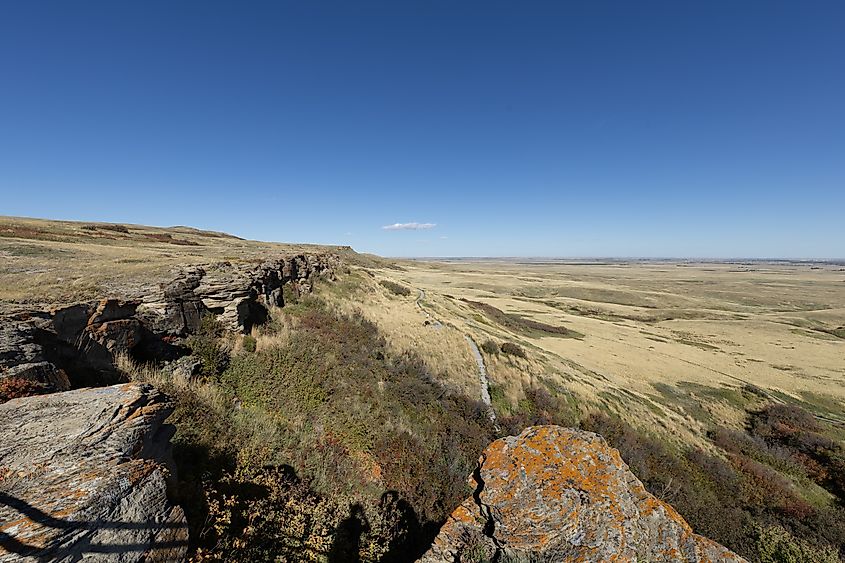
As mentioned, the Head-Smashed-In Buffalo Jump was historically used by the Indigenous peoples of the Northern Plains, particularly the Blackfoot Confederacy, whose territory ranged from Montana to central Alberta. The Blackfoot and possibly other Plains tribes, including the Cree and Assiniboine, seasonally visited this site for nearly 6,000 years as a method of communal bison hunting. A successful operation of the buffalo jump required extensive planning, cooperation, and understanding of bison behavior.
The Head-Smashed-In Buffalo Jump and the area around it remained a significant hunting ground for these tribes until the late 1800s when changes in hunting practices and the near-extinction of bison effectively ended its use.
Why is Head-Smashed-In So Significant?
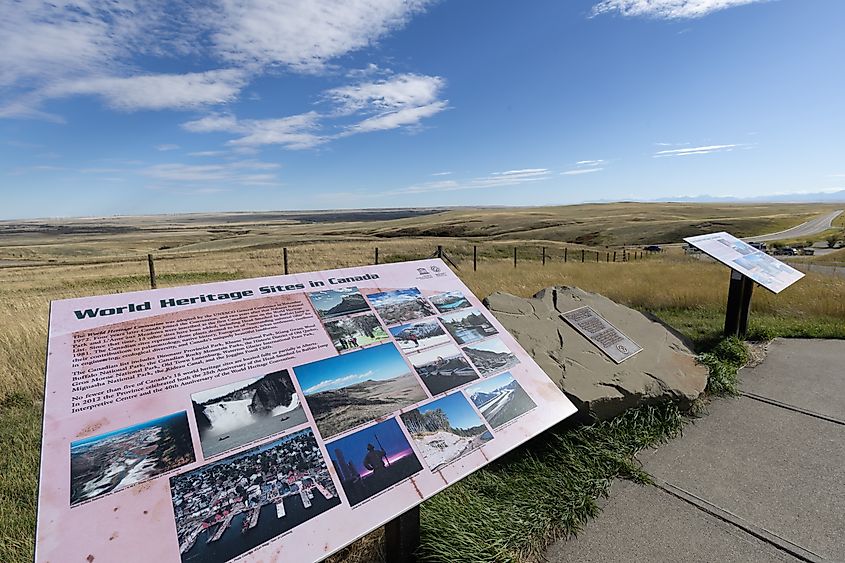
Head-Smashed-In Buffalo Jump is one of the most significant buffalo jump sites in the world due to its exceptional preservation and extensive use over thousands of years. It stands out for its continuous use by Indigenous peoples, like the Blackfoot, for nearly 6,000 years, far longer than most other known buffalo jumps. This remarkable history now makes it one of the best-documented examples of communal bison hunting practices in all of North America.
What also sets Head-Smashed-In apart from other buffalo jumps is its large scale. The site includes extensive archaeological layers, revealing well-preserved remains of bison bones, stone tools, and evidence of butchering and processing areas covering several generations. These layers document not only hunting techniques but also broader aspects of Indigenous life, such as tool-making and social organization.
Its significance was internationally recognized in 1981 when it was designated a UNESCO World Heritage Site, marking it as an outstanding example of human ingenuity with the natural world across time. Also unlike many other buffalo jumps that have eroded or disappeared over time, Head-Smashed-In remains largely intact, giving present-day visitors a unique window into the hunting practices and survival strategies of western Canada's Indigenous cultures over millennia.
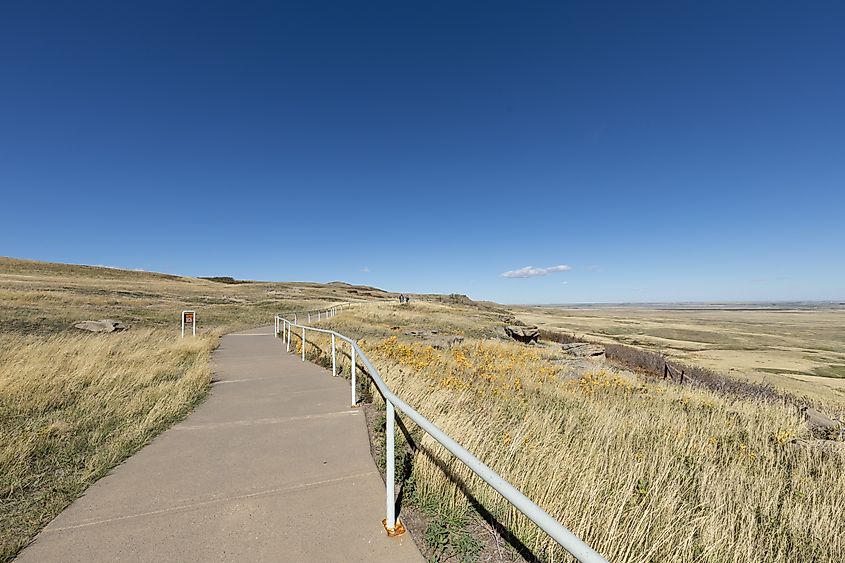
Etymology
What intrigues many about this location is its peculiar name. What could give this place an important place such a morbid-sounding title?
The "buffalo jump" part is somewhat obvious, and you may think that "Head-Smashed-In" could be referring to the method of slaughter for the buffalo that went over the edge, but it is actually a nod to legend in which a Blackfoot warrior got caught in a rushing herd of the hulking animals and was later found under the kill pile with his head smashed in. In the Blackfoot language, this jump is titled "Estipah-skikikini-kots."
Visiting Head-Smashed-In Buffalo Jump
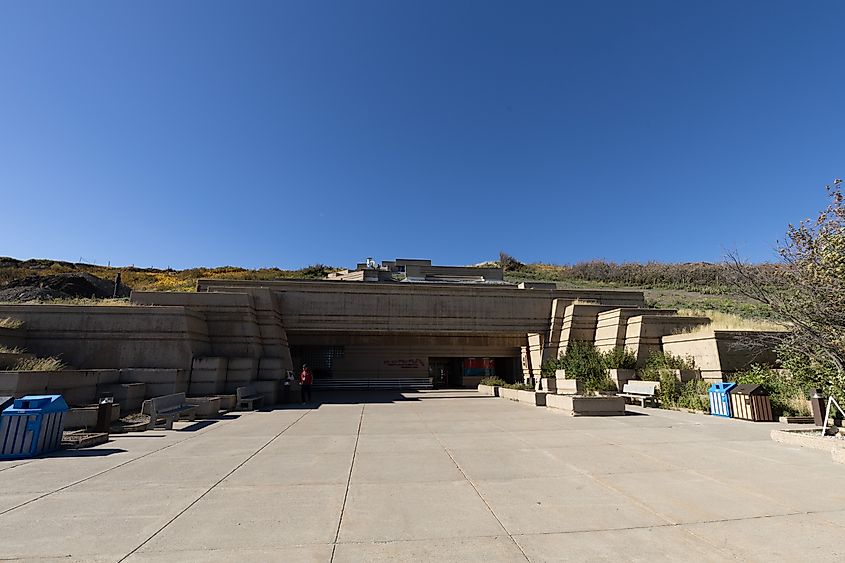
Today, visitors to Head-Smashed-In Buffalo Jump can explore a range of activities that bring the site's fascinating history to life. The interpretive center, built into the cliffside, is a gorgeous example of modern architecture and contains five levels of exhibits detailing the history, archaeology, and cultural significance of the site. Here, you can learn about the Indigenous peoples' sophisticated buffalo hunting techniques at the jump and the surrounding prairies, view excavated artifacts, and understand the ecological and cultural importance of the bison.
Guided tours, led by knowledgeable staff, allow guests to take an educational walk on top of the cliffs and through the plains below. You are also able to navigate these paths alone, with the walkway on top of the cliffs being accessible from the top floor of the museum (which can be reached by either elevator or stairs).
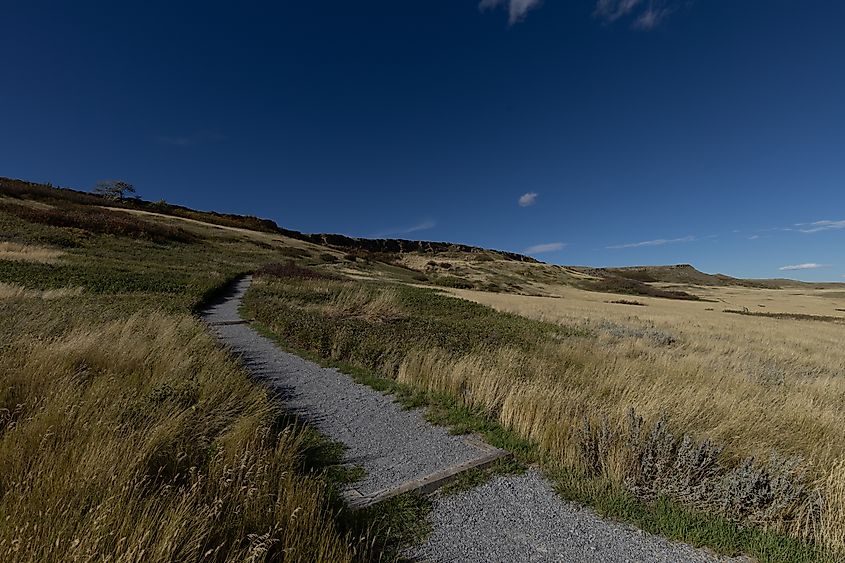
Special events, such as traditional drumming and dance performances, are other activities at this site that you can enjoy. The museum also features a gift shop with crafts and souvenirs, as well as restrooms and picnicking facilities. Visitors can park and one of two main parking lots outside of the sight.
Exploring the Legacy of Head-Smashed-In Buffalo Jump
Most who go to this UNESCO site come down from Calgary, a simple 1.5 to 2-hour drive away. The main route is to simply go due south on Highway 2 until you reach the Buffalo Jump just west of Fort Mcleod, the nearest major town to the site. Fort Macleod can make for an ideal stop on your trip, as it features amenities like restaurants and gas stations, along with its own historical landmarks worth checking out, namely the fort (now a museum) that shares its name with the town.
For those coming up from the United States, the nearest border crossing is the Piegan-Carway Port of Entry. From there, you head directly north on Highway 2 for just over an hour until you reach the destination.











